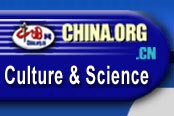China Science and Technology Exhibition Center seeks not only to educate visitors about the science, but also to spark their curiosity and creative powers. Exhibits are intended not to fill visitors' heads with lists of facts, but rather to instill an appreciation for the power of science and inspire visitors to learn more on their own.
The center opens on Children's Day, June 1,2000. China Science and Technology Exhibition Center's innovative teaching methods reflect a new period of education in China. The center's ten new halls feature space, environment and life sciences, physics and mechanics, transportation and energy resources, materials science, information technology, mathematics, electromagnetics, and high-voltage discharge exhibits. Displays comprise more than 550 scientific achievement projects completed by the Chinese in ancient and modern times.
The center provides many entertaining, hands-on learning activities. For example, visitors can ride on a magnetic-suspended train at 400 kilometers per hour. The train represents a possible means of transportation in the future. Visitors can also sit in the cabin of a model spacecraft, where they can take in spectacular views of the universe and learn about astronaut life. They can also walk in a mock moon environment that simulates the feelings of weightlessness. The center also features a Flying-Heaven Swing made with special Kevlar materials, as well as, a gorgeous "chameleon" and a mysterious "memory alloy-water-wheel."
Riding a bicycle across a tightrope is usually only done by professional acrobats. But at the China Science and Technology Exhibition Center, anyone can perform the highly difficult routine. The center has installed a special balanced weight system on a bicycle. Visitors can control robotic fish and maneuver them through obstacles. Visitors can also operate different kinds of machines or ride a special cart with square wheels.
A large yellow hen is the most eye-catching item on the third floor. Around the hen are four incubators that hatch eggs every 20 days. Visitors can see the wriggling eggs when the baby chickens struggle to break free from the shells as well as their first steps in their new lives.
In the Life Science hall, visitors can learn about DNA, chromosomes, and basic systems in the human body. The hall features a model heart, blood circulation system, and brain. A brain exhibit will teach visitors how to make themselves cleverer.
Human innovation drives scientific development and social progress. Almost all schools in China teach students systematic knowledge but neglect the cultivation of students' creative powers. Exhibits at the center make up for schools' inadequacies, nurturing visitors' power of observation and imagination.
